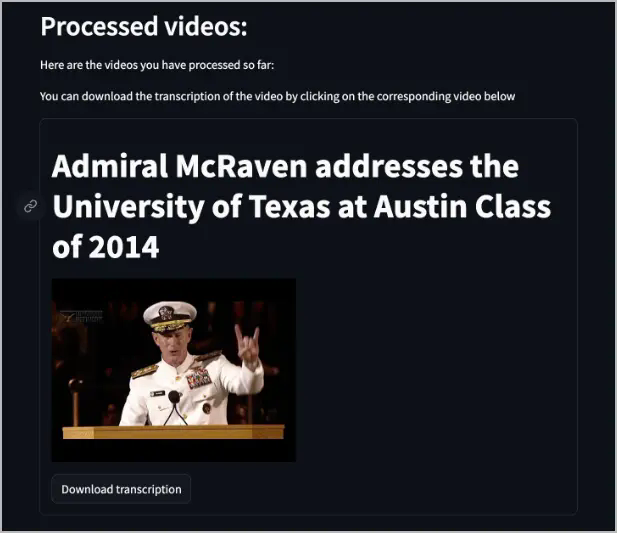#----------------------------------------------------------------------------
PINECONE_TOKEN=your-api-key # Replace your-api-key with your personal API key
```
3. Build and run the application. In a terminal, change directory to your
`docker-genai` directory and run the following command.
```console
$ docker compose up --build
```
Docker Compose builds and runs the application based on the services defined
in the `docker-compose.yaml` file. When the application is running, you'll
see the logs of 2 services in the terminal.
In the logs, you'll see the services are exposed on ports `8503` and `8504`.
The two services are complimentary to each other.
The `yt-whisper` service is running on port `8503`. This service feeds the
Pinecone database with videos that you want to archive in your knowledge
database. The following section explores this service.
## Using the yt-whisper service
The yt-whisper service is a YouTube video processing service that uses the OpenAI
Whisper model to generate transcriptions of videos and stores them in a Pinecone
database. The following steps show how to use the service.
1. Open a browser and access the yt-whisper service at [http://localhost:8503](http://localhost:8503).
2. Once the application appears, in the **Youtube URL** field specify a Youtube video URL
and select **Submit**. The following example uses
[https://www.youtube.com/watch?v=yaQZFhrW0fU](https://www.youtube.com/watch?v=yaQZFhrW0fU).

The yt-whisper service downloads the audio of the video, uses Whisper to
transcribe it into a WebVTT (`*.vtt`) format (which you can download), then
uses the text-embedding-3-small model to create embeddings, and finally
uploads those embeddings in to the Pinecone database.
After processing the video, a video list appears in the web app that informs
you which videos have been indexed in Pinecone. It also provides a button to
download the transcript.
